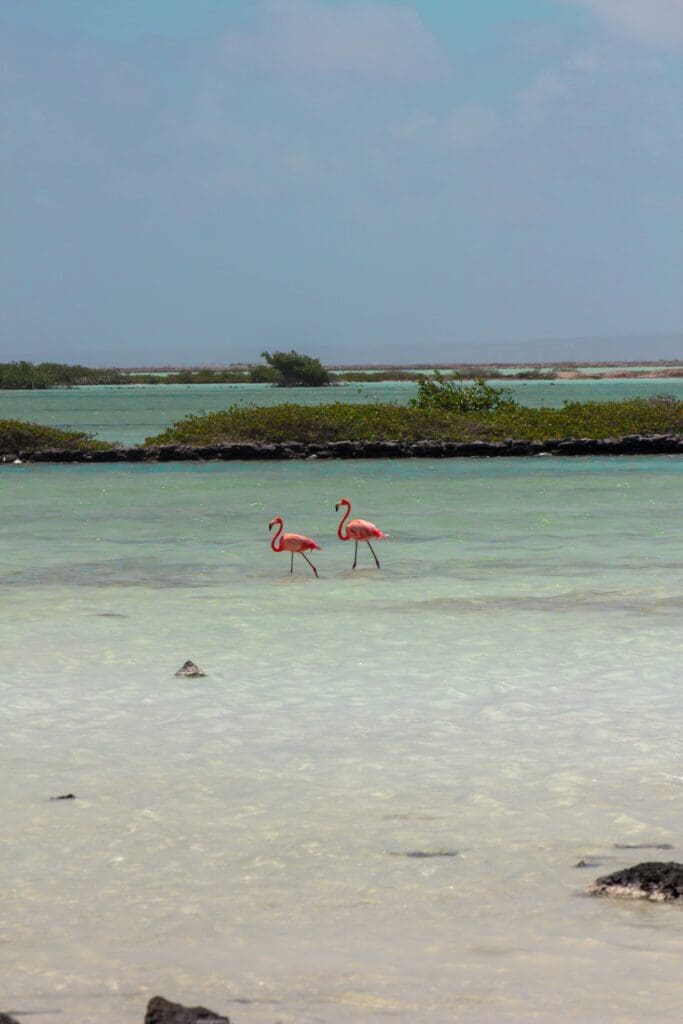Bonaire
Country Name: Bonaire, Sint Eustatius, and Saba (Special Municipality of the Netherlands)
Capital City: Kralendijk
Population: Approximately 24,000 (2024 est.)
Official Language: Dutch (Papiamento is widely spoken)
Currency: Netherlands Antillean Guilder (ANG)
Time Zone: Atlantic Standard Time (AST), UTC -4




Diving Overview
Bonaire is renowned for its exceptional diving opportunities, featuring crystal-clear waters, abundant marine life, and well-preserved coral reefs. Its status as a top dive destination is complemented by its dedication to marine conservation and accessibility for divers of all levels.
- Number of Dive Sites: Over 80
- Types of Diving: Shore dives, reef diving, and wall dives.
- Marine Biodiversity Highlights: Turtles, rays, seahorses, a variety of reef fish, and healthy coral formations.
- Average Water Temperatures: 26-30°C (79-86°F)
- Visibility Range: 15-30 meters (50-98 feet)
Important Information
Optimal Dive Seasons
Bonaire offers excellent diving conditions year-round. However, the best visibility and diving conditions are typically from September to November, when the weather is stable and the waters are calm.
Major Airports
Bonaire International Airport (BON)
The Travel Tip
A 3mm wetsuit is generally sufficient for Bonaire’s warm waters, but consider a thicker suit if you plan on extended dives or if you’re particularly sensitive to cooler temperatures.
Weather Patterns
Bonaire enjoys a tropical climate with warm temperatures year-round. The island experiences a dry season from December to September and a wet season from October to November. However, rainfall is generally minimal and does not significantly impact diving conditions.
Internal Transportation
Transportation on Bonaire includes rental cars, scooters, and taxis. The island is small and easily navigable, making it convenient to explore various dive sites and attractions.
Attractions
Bonaire is famous for its stunning marine parks, including the Bonaire National Marine Park and the Washington Slagbaai National Park. Visitors can enjoy pristine beaches, vibrant coral reefs, and a variety of outdoor activities such as snorkeling, kite surfing, and exploring the island’s unique landscapes.
Top Dive Regions
Bonaire is renowned for its incredible diving opportunities, offering pristine coral reefs, abundant marine life, and crystal-clear waters. The island’s marine parks are a diver’s paradise, with each region showcasing unique underwater landscapes and diverse ecosystems. Bonaire National Marine Park surrounds the entire island, featuring accessible dive sites from the shore, vibrant coral reefs, and a variety of marine species. Washington Slagbaai National Park offers remote dive spots with dramatic underwater topography and rich marine biodiversity. Klein Bonaire, an uninhabited island off the coast of Bonaire, is famous for its untouched reefs and exceptional visibility. Salt Pier provides unique diving experiences around a historic salt loading dock, known for its large schools of fish and fascinating underwater structures. These top dive sites highlight Bonaire’s appeal as a premier diving destination with diverse and well-preserved marine environments.

Bonaire National Marine Park
Encircling the island, this marine park offers accessible shore diving with vibrant coral reefs and diverse marine life.

Washington Slagbaai National Park
Offers remote dive spots with dramatic underwater landscapes and rich marine biodiversity.

Klein Bonaire
An uninhabited island with untouched reefs, exceptional visibility, and pristine underwater environments.

Salt Pier
Known for its historic salt loading dock, this site features large schools of fish and unique underwater structures.
Marine Life
Bonaire’s marine environments are renowned for their exceptional underwater biodiversity and pristine conditions. As part of the Caribbean Netherlands, Bonaire boasts vibrant coral reefs, teeming with a variety of marine life. The island’s coral reefs, especially within the Bonaire National Marine Park, are home to a rich array of species including colorful tropical fish, sea turtles, rays, and a variety of invertebrates. Klein Bonaire, an uninhabited island just off the coast, offers similarly stunning underwater landscapes with pristine reefs. Bonaire’s marine ecosystems thrive in the clear, warm waters, supporting a wealth of marine species such as parrotfish, angelfish, and the iconic seahorses. The island’s commitment to marine conservation ensures that these ecosystems remain healthy and vibrant, making Bonaire a premier destination for divers and marine enthusiasts.
Common Species: Tropical fish, sea turtles, rays, parrotfish, angelfish, seahorses, and various invertebrates.
Seasonal Highlights: Bonaire’s marine life is abundant year-round, but the best time to visit for optimal diving conditions is typically from December to April, when visibility is at its peak and the waters are calm.
-
Overview of Bonaire
Introduction Overview Bonaire, one of the ABC islands in the Caribbean, is an absolute gem for scuba diving enthusiasts. Known for its pristine marine environment and dedication to conservation, Bonaire has consistently ranked among the top diving spots in the…
-
Overview of Bonaire National Marine Park
Introduction Overview Bonaire National Marine Park stands as one of the Caribbean’s most revered diving destinations, renowned for its crystal-clear waters and exceptional marine biodiversity. Located in the Dutch Caribbean, off the coast of Venezuela, this protected marine park offers…
-
Best time to dive in Bonaire National Marine Park
Diving in Bonaire National Marine Park is an exhilarating experience, renowned for its pristine coral reefs, diverse marine life, and crystal-clear waters. Choosing the right time to dive is crucial for maximizing your underwater adventure. In this article, we’ll explore…
-
Dive sites in Bonaire National Marine Park
Renowned as a top-tier dive destination, Bonaire National Marine Park is a diver’s paradise located in the southern Caribbean. Officially established in 1979, this marine park encompasses the entire coastline of Bonaire and Klein Bonaire, ensuring the protection of its…
-
Dive sites in Bonaire
Introduction Situated in the southern Caribbean, off the coast of Venezuela, Bonaire is a premier diving destination renowned for its pristine coral reefs, clear waters, and thriving marine life. As part of the Dutch Caribbean, Bonaire is recognized for its…
-
Best time to dive in Bonaire
Diving in Bonaire is a dream come true for many scuba enthusiasts. Known for its crystal-clear waters, diverse marine life, and well-preserved coral reefs, it’s a top destination for underwater adventures. Choosing the right time to dive in Bonaire is…



